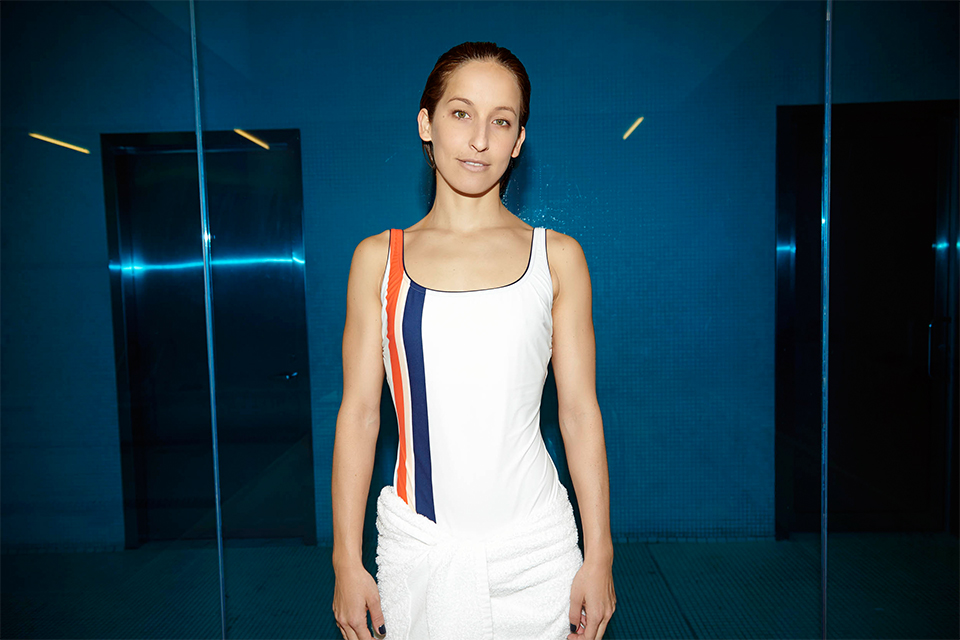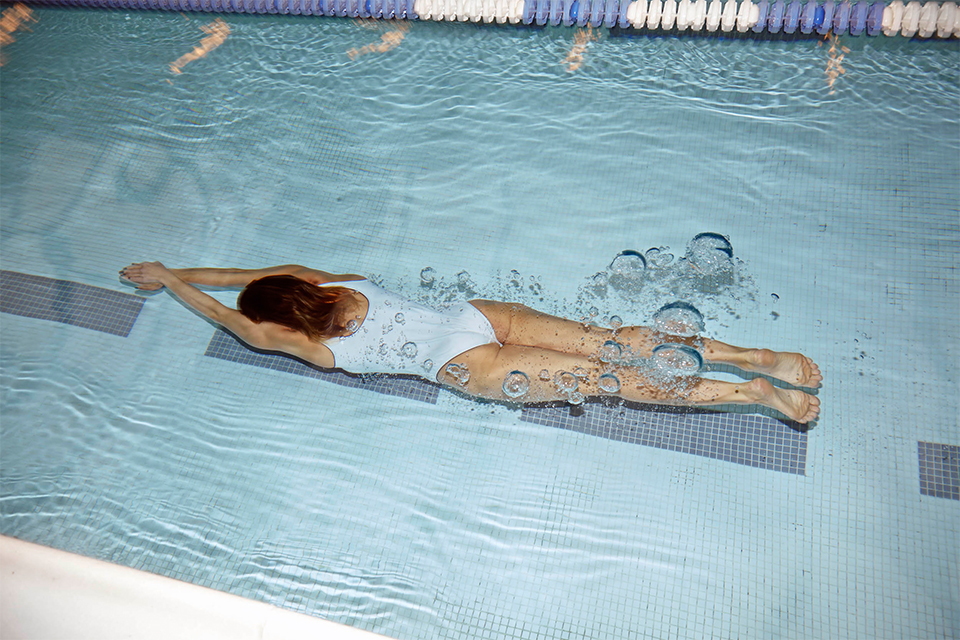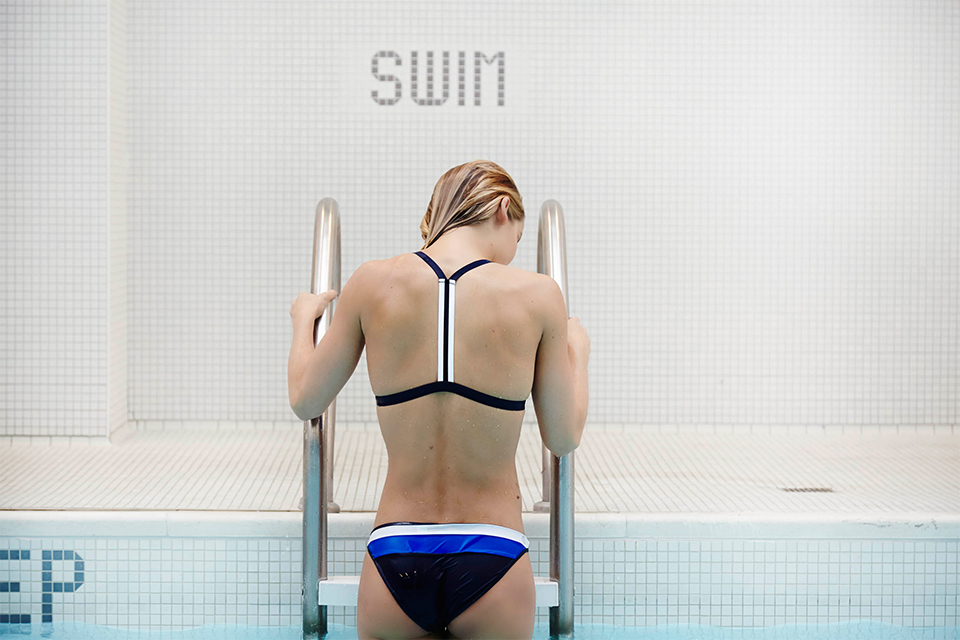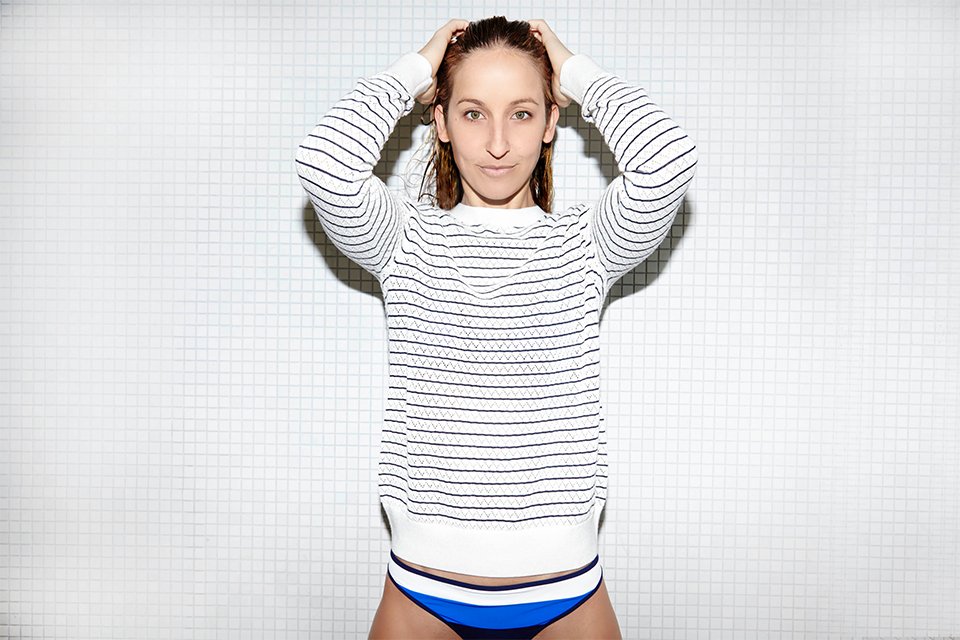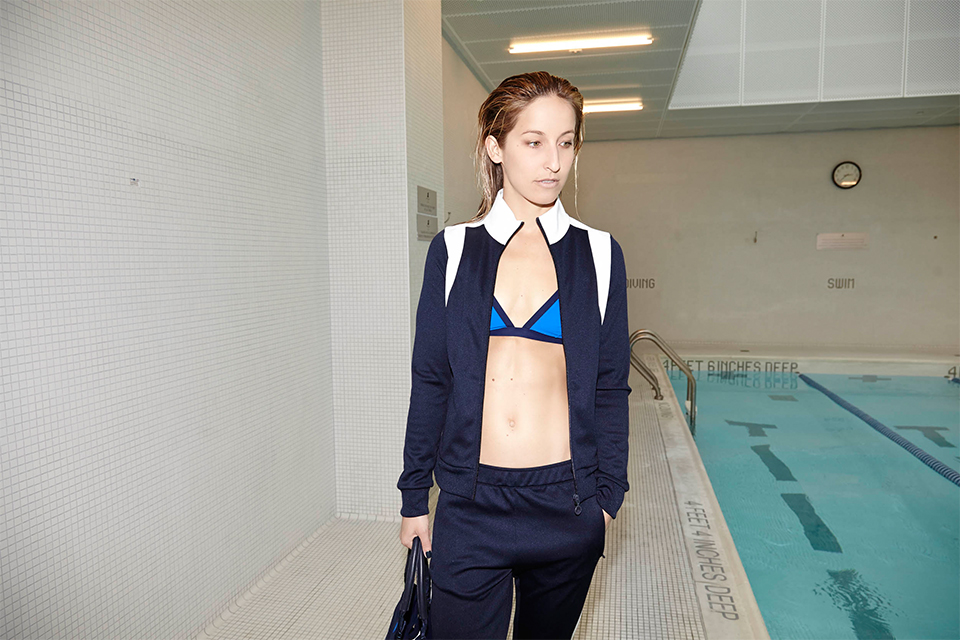California-born, Brooklyn-based Kim Vandenberg turned a childhood love of swimming into a rewarding career. The pro competitive swimmer, who signed her first contract right out of UCLA, is an Olympic medalist (2008’s 4 x 200 Freestyle Relay) and a three-time U.S. National Champion (200 Butterfly) — and those are just a few of her numerous honors. Here, Vandenberg — who also works for Excelle Sports — shares her thoughts on training, diet and why the butterfly stroke rules.
I started swimming because…
My family had a backyard pool growing up in Northern California. I would spend summers racing my brothers and playing in the pool with my friends. We would make up games and be creative in the water; sometimes we would spend all day in the pool. That was what first sparked my competitive nature. I loved the excitement of racing. I joined my first summer league swim team when I was eight years old and have been swimming competitively ever since. I have been racing for over 24 years of my life.
What I love about it…
I love the lifestyle. Swimming is such a healthy sport, it works almost every muscle group in the body and is also a form of meditation for me. I love the sensation of being under water — it is a comfort zone in a lot of ways. I enjoy being alone with my thoughts while I am swimming. After a busy day or traveling, jumping in a pool to swim is almost always the best remedy for me to destress and reenergize. I also love the people in the sport. I have been able to travel the world competing and, from that, I have become good friends with other Olympic swimmers from all over Europe, Australia, Brazil.
Competitive swimming is about…
The challenge of being the best you can be. There are so many challenges, both mentally and physically, and trying to push beyond the self-limiting thought patterns has always been one of my favorite parts about swimming. Competing at the Olympic Games is any athlete’s dream and it was an incredible experience to have, but competing against myself has become my new vision. I appreciate what my body can do on a much deeper level now that I am getting older in the sport. I enjoy the process of preparing for race days, the little things like working on technique, breathing patterns and race strategy. My respect for other athletes in the sport has also motivated me and inspired me.
My favorite swim stroke…
I have always loved the butterfly. I swim freestyle as well, but butterfly has been my favorite stroke since I was a young girl. Maybe it was because I loved The Little Mermaid when I was young and I would pretend I was a mermaid in the pool for hours upon hours. I remember holding my breath and kicking dolphin kicks underwater, watching my shadow in the pool imagining that I was a mermaid. That’s a bit embarrassing to admit, but I actually do believe that it helped my rhythm of the stroke. I also like how challenging the butterfly stroke is — it is a mentally tough race to swim a 200 butterfly. Most people would agree that it is one of the most difficult strokes. I enjoy that challenge; I find it interesting.
My pre-competition routine and rituals…
I usually stretch and do activation drills for about 20 to 30 minutes and then I warm-up in the pool for about 30 minutes. I listen to music and visualize my race strategy while focusing on my breath.
I train by…
A mix of swimming, yoga, boxing, cardio and light weight lifting. I have also explored barre class and some circuit training classes. I also work on my nutrition and my mentality by exploring meditation and breath-work classes.
And when it comes to my diet…
I recently stopped eating meat to focus on a plant-based diet. I eat mostly fish and tofu with lots of dark greens, quinoa and brown rice. I also eliminated alcohol from my diet — that has been a big life change and has helped my energy levels. I still indulge in dark chocolate and some sweets, but I rarely go overboard. I get a lot of tips from my nutritionist friend Katie Norris. Her website is figgyandsprout.com and is filled with helpful tips and recipes.
A typical practice session includes…
I swim for about an hour and a half then do a dry-land component, either boxing, yoga or cardio/weights. In total, the training is about three hours per day. Some days I swim twice, for an hour in the morning and another hour in the evening after work.
An insider tip for those looking to get into competitive swimming…
Work with a private coach to develop your stroke technique. Most recreational swimmers I see at local pools really need to work on their technique because they are wasting a lot of energy. I teach private lessons around New York, but there are definitely other programs to explore. There are a lot of Master’s swim teams and private lesson opportunities at Asphalt Green, Red Tide and Imagine Swimming (for the younger swimmers out there).
I define wellness as…
Finding a balance in life. Wellness, in my opinion, is a combination of cultivating gratitude, challenging the mind and body, and pursuing goals, whatever they may be.
Explore more sport features from Inside Track.

